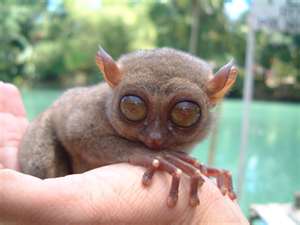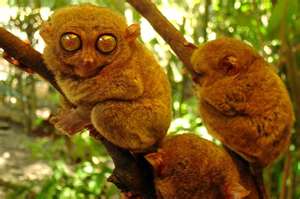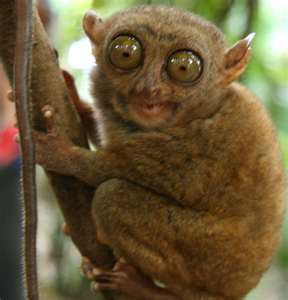Last week at the Lemur -Meet the Keeper program, I meet two grandparents who told me all about the second smallest primate in the world and I wanted to share this adorable creature with you all.

The Bohol Tarsier, who lives in the Philippines, belongs to the primate sub-order Prosimian- making them a close relative to the Lemurs here at the museum. They are obviously tiny little animals- no more than 5 inches long and 142 grams. (the smallest primate in the world is the mouse lemur- possibly a future blog post)
So here’s the cool stuff—> Tarsiers can actually rotate their head 180 degrees in each direction just like the Owls in Carolina Wildlife. This small animal can leap up to 10 feet- how incredible is that? It’s believed they can gain so much air because they have extra long tarsal bones. In fact, that is where they get their name from, tarsal –> tarsier. They also have extremely sharp teeth for catching prey- which consists mostly of insects and small lizards, they eat lots of fruit as well. They are nocturnal just like our opossums. They live in groups and can live to the age of 20. The gestation period of the Tarsier is about 6 months and just one young is born at a time. Babies begin to move about after only 2 days and can jump after only 4 days. Which is quite different than how our possible red wolf pups will develop- they won’t even begin to venture outside of the den until they are about 4 weeks old.

Unfortunately there are only about 1,000 Bohol Tarsiers left in the wild.

Did I mention their facial expressions?!!!!!
This was the video I was telling you about Kim http://www.youtube.com/watch?v=JTMf40ORFE8&feature=related makes me LOL
love the eyes on that little guy
Hi Iwas wondering if I could ask you a question about ring tail lemurs. Can a 14 month old lemur be casterated safely?
Hi Tammy,
I’m afraid I cannot accurately answer your question. It’s best to contact the Duke Lemur center, http://lemur.duke.edu/, as they are the world’s experts when it comes to lemurs.